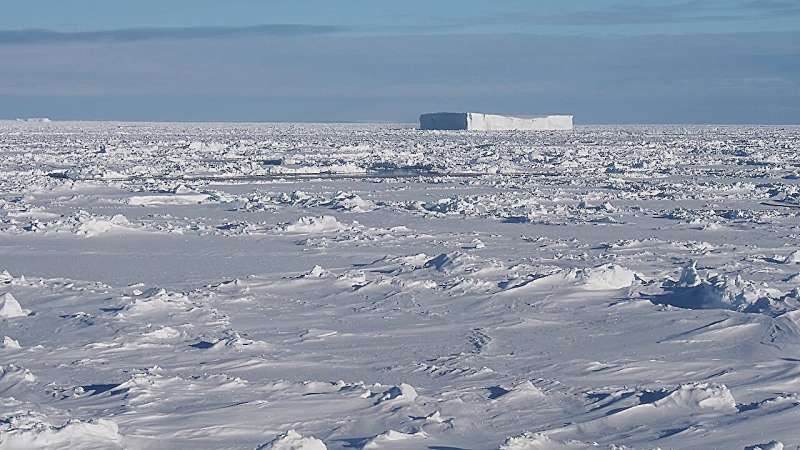This article has been reviewed according to Science X's editorial process and policies. Editors have highlighted the following attributes while ensuring the content's credibility:
fact-checked
proofread
The lows and lows of Antarctic sea ice

Data from the US National Snow and Ice Data Center (NSIDC) have revealed another summer of exceptionally low sea-ice extent around Antarctica.
Sea-ice extent around the frozen continent was measured at 1.99 million square kilometers, with scientists suggesting a "regime shift" could be underway.
It's the third year in a row Antarctic sea-ice extent has dropped below the long-term summer average of 2–4 million square kilometers, since satellite records began in 1979.
February 2023 holds the record for the lowest summer sea-ice extent over the past 46 years, of 1.77 million square kilometers—36% less than average.
Winter sea-ice extent has also been declining. In September 2023, it dipped to a new record low of 16.96 million square kilometers, compared to the usual 19–20 million square kilometers.
The NSIDC said that the trend in summer sea-ice extent is a reduction of 4,700 square kilometers per year, or 1.7% per decade, relative to the 1981 to 2010 average.
This reduction is not statistically significant due to volatile year-to-year changes in Antarctic sea ice over the last two decades—in stark contrast to the Arctic, where the decline is continuous and larger in magnitude.
However, sea-ice scientist Dr. Petra Heil, from the Department of Climate Change, Energy, the Environment and Water's Australian Antarctic Division, said if Antarctic sea ice continues to decline, it will have global consequences.
"The decline in Antarctic sea ice directly impacts the local climate and ecosystems but also affects climate and ecosystems processes around the world, with repercussions for our lifestyle and economic interests," she said.
"Our Antarctic marine and field research, as well as remote-sensing analysis over more than 30 years, has been invaluable to our understanding of sea-ice change and its far-reaching impacts, but we need to intensify our research to obtain critical observations now, given the rate of change has accelerated severely."
The current decline, which has been underway since 2016, comes after more than 30 years of a small, steady gain in Antarctic sea ice. This included a record winter high in 2012 and another in 2014.
Then in the spring of 2016, Antarctic sea ice fell to a (then) record low, and has been below average for most years since.
Research points to ocean warming as playing a key role in the deficit of sea ice around Antarctica since then. Scientists say Antarctic sea ice may have been pushed to new state of diminished coverage (similar to that in the Arctic), from which it may not recover.
Antarctic sea ice has been described as the beating heart of the planet, as it expands in winter and contracts in summer.
This regular cycle of freezing and thawing keeps our planet functioning, regulating global climate and sea-level rise.
Sea ice also provides habitat for krill and other small marine creatures that are food for whales, penguins, seals and fish. These smaller marine organisms also perform important ecosystem functions, such as extracting carbon from the atmosphere.
The Australian Antarctic Program has a range of long-term observing and other research activities to understand the nature and impacts of sea-ice change. These include remote-sensing and physical "on-ice" measurements within the sea-ice zone.
The data collected from this work will help validate and calibrate satellite observations of sea ice, and improve satellite-derived products. These allow scientists to scale up more localized measurements, and provide an Antarctic-wide picture of the sea-ice environment.
Physical sea-ice measurements also help build an accurate picture of how ocean, ice and atmospheric processes contribute to sea-ice changes, and provide baseline data to ensure satellite-derived products, forecasts and model predictions are accurate.
"Given Antarctica's global reach, if we want to understand the risks to Australia from climate tipping points, we need to improve our knowledge of processes and change in Antarctica and the Southern Ocean," Dr. Heil said.
Provided by Australian Antarctic Program




















